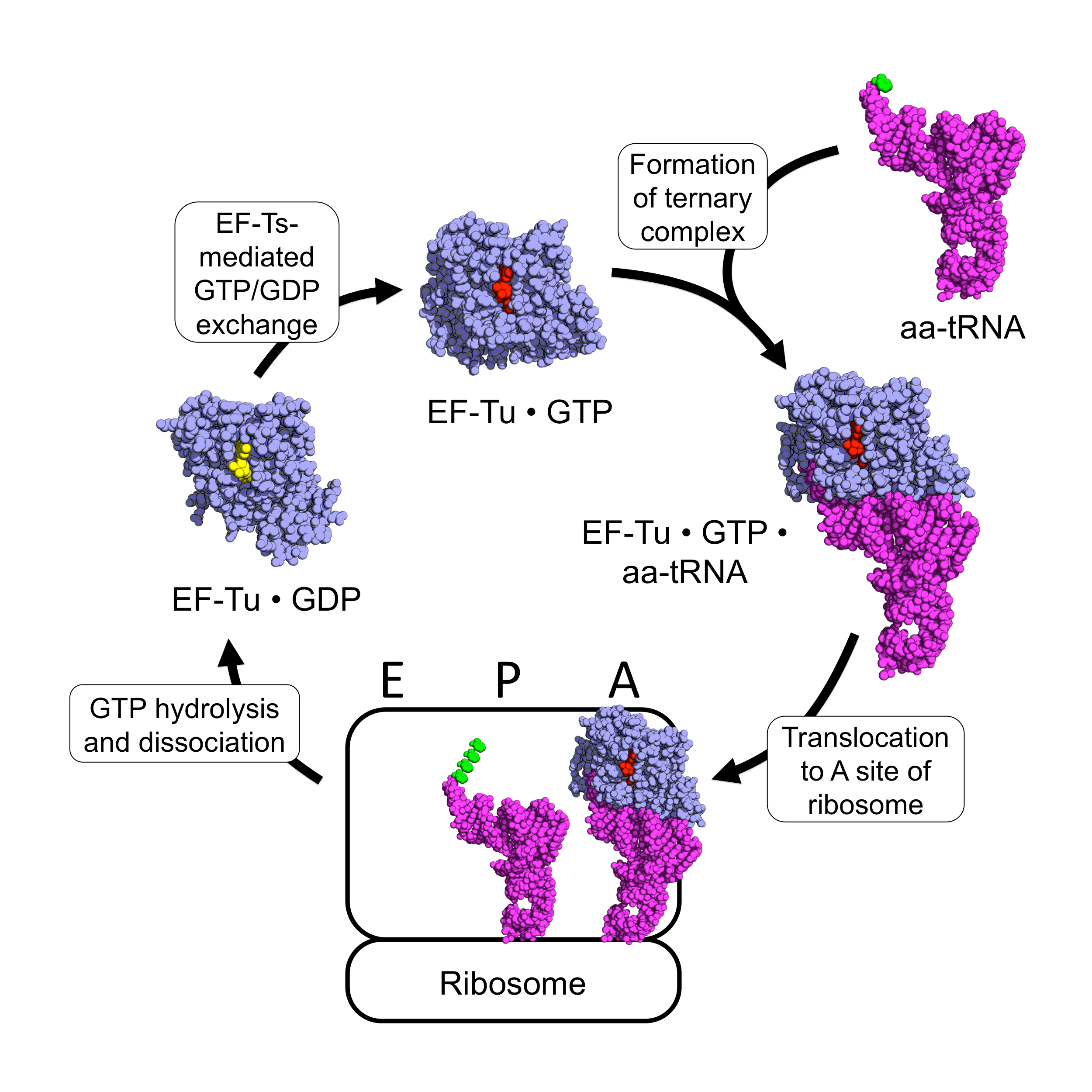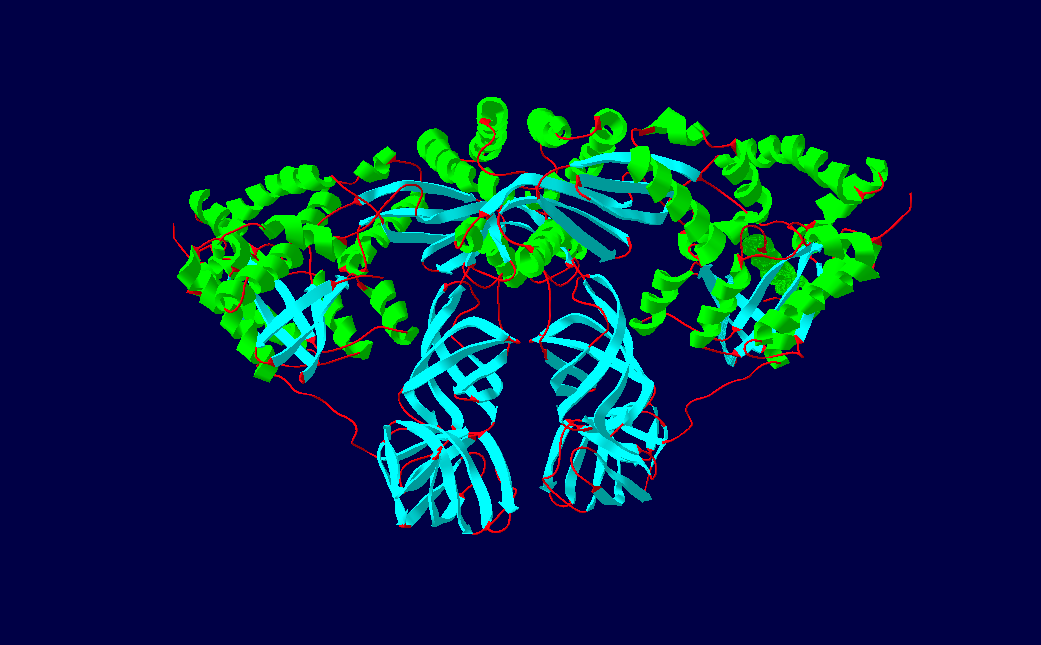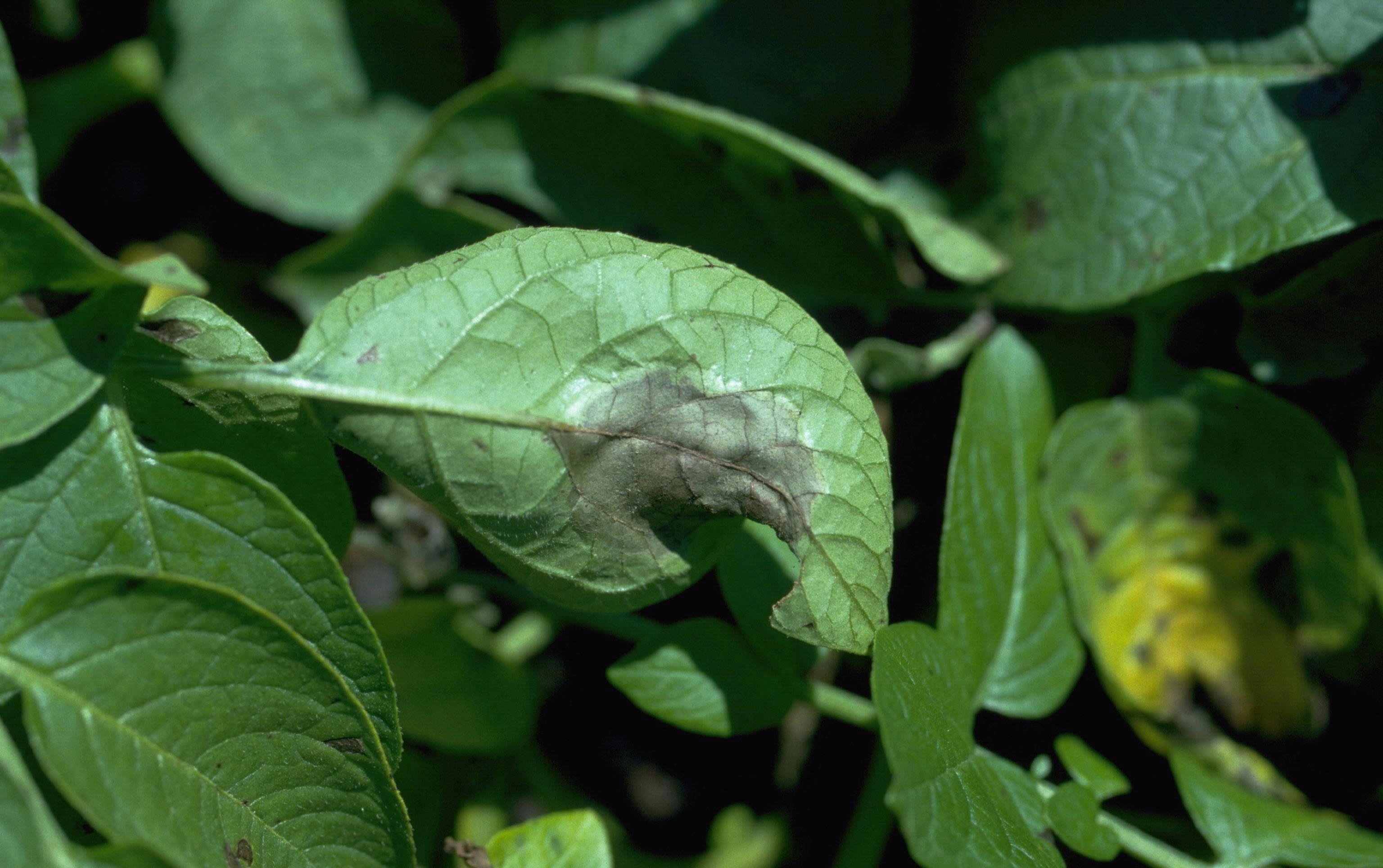|
EEF-1
eEF-1 are two eukaryotic elongation factors. It forms two complexes, the EF-Tu homolog EF-1A and the EF-Ts homolog EF-1B, the former's guanide exchange factor. Both are also found in archaea. Structure The nomenclature for the eEF-1 subunits have somewhat shifted around circa 2001, as it was recognized that the EF-1A and EF-1B complexes are to some extent independent of each other. Components as currently recognized and named include: The precise manner eEF1B subunit attaches onto eEF1A varies by organ and species. eEF1A also binds actin. Other species Various species of green algae, red algae, chromalveolates, and fungi lack the EF-1α gene but instead possess a related gene called EFL (elongation factor-like). Although its function has not been studied in depth, it appears to be similar to EF-1α. , only two organisms are known to have both EF-1α and EFL: the fungus ''Basidiobolus'' and the diatom '' Thalassiosira''. The evolutionary history of EFL is unclear. It ... [...More Info...] [...Related Items...] OR: [Wikipedia] [Google] [Baidu] |
Eukaryotic Elongation Factor
Elongation factors are a set of proteins that function at the ribosome, during protein synthesis, to facilitate translational elongation from the formation of the first to the last peptide bond of a growing polypeptide. Most common elongation factors in prokaryotes are EF-Tu, EF-Ts, EF-G. Bacteria and eukaryotes use elongation factors that are largely homologous to each other, but with distinct structures and different research nomenclatures. Elongation is the most rapid step in translation. In bacteria, it proceeds at a rate of 15 to 20 amino acids added per second (about 45-60 nucleotides per second). In eukaryotes the rate is about two amino acids per second (about 6 nucleotides read per second). Elongation factors play a role in orchestrating the events of this process, and in ensuring the high accuracy translation at these speeds. Nomenclature of homologous EFs In addition to their cytoplasmic machinery, eukaryotic mitochondria and plastids have their own translation ... [...More Info...] [...Related Items...] OR: [Wikipedia] [Google] [Baidu] |
EEF1A1
Elongation factor 1-alpha 1 (eEF1a1) is a translation elongation protein, expressed across eukaryotes. In humans, it is encoded by the ''EEF1A1'' gene. This gene encodes an isoform of the alpha subunit of the elongation factor-1 complex, which is responsible for the enzymatic delivery of aminoacyl tRNAs to the ribosome. This isoform (alpha 1) is expressed in brain, placenta, lung, liver, kidney, and pancreas, and the other isoform (alpha 2) is expressed in brain, heart and skeletal muscle. This isoform is identified as an autoantigen in 66% of patients with Felty's syndrome. This gene has been found to have multiple copies on many chromosomes, some of which, if not all, represent different pseudogenes. Structure Mammalian eEF1A possesses two paralogs, eEF1A1 and eEF1A2, with high amino acid sequence homology (approximately 90% identity). The sequences of their promoter regions are also highly similar, though that of the ''eEF1A2'' gene contains an additional 81 bp SV40 small a ... [...More Info...] [...Related Items...] OR: [Wikipedia] [Google] [Baidu] |
EF-Tu
EF-Tu (elongation factor thermo unstable) is a prokaryotic elongation factor responsible for catalyzing the binding of an aminoacyl-tRNA (aa-tRNA) to the ribosome. It is a G-protein, and facilitates the selection and binding of an aa-tRNA to the A-site of the ribosome. As a reflection of its crucial role in translation, EF-Tu is one of the most abundant and highly conserved proteins in prokaryotes. It is found in eukaryotic mitochondria as TUFM. As a family of elongation factors, EF-Tu also includes its eukaryotic and archaeal homolog, the alpha subunit of eEF-1 (EF-1A). Background Elongation factors are part of the mechanism that synthesizes new proteins through translation in the ribosome. Transfer RNAs (tRNAs) carry the individual amino acids that become integrated into a protein sequence, and have an anticodon for the specific amino acid that they are charged with. Messenger RNA (mRNA) carries the genetic information that encodes the primary structure of a protein ... [...More Info...] [...Related Items...] OR: [Wikipedia] [Google] [Baidu] |
EEF1B2P3
Eukaryotic translation elongation factor 1 beta 2 pseudogene 3 (eEF1B4) is a protein that in humans is encoded by the EEF1B2P3 gene. See also *eEF-1 eEF-1 are two eukaryotic elongation factors. It forms two complexes, the EF-Tu homolog EF-1A and the EF-Ts homolog EF-1B, the former's guanide exchange factor. Both are also found in archaea. Structure The nomenclature for the eEF-1 subuni ... References {{gene-X-stub ... [...More Info...] [...Related Items...] OR: [Wikipedia] [Google] [Baidu] |
EEF1B2P1
Eukaryotic translation elongation factor 1 beta 2 pseudogene 1 (eEF1B1) is a protein that in humans is encoded by the EEF1B2P1 gene. See also * eEF-1 References {{gene-15-stub ... [...More Info...] [...Related Items...] OR: [Wikipedia] [Google] [Baidu] |
EEF1A1P43
Eukaryotic translation elongation factor 1 alpha 1 pseudogene 43 (eEF1A3) is a protein that in humans is encoded by the EEF1A1P43 gene. See also *eEF-1 eEF-1 are two eukaryotic elongation factors. It forms two complexes, the EF-Tu homolog EF-1A and the EF-Ts homolog EF-1B, the former's guanide exchange factor. Both are also found in archaea. Structure The nomenclature for the eEF-1 subuni ... References {{gene-17-stub ... [...More Info...] [...Related Items...] OR: [Wikipedia] [Google] [Baidu] |
EEF1A2
Elongation factor 1-alpha 2 is a protein that in humans is encoded by the ''EEF1A2'' gene. Function This gene encodes an isoform of the alpha subunit of the elongation factor-1 complex, which is responsible for the enzymatic delivery of aminoacyl tRNAs to the ribosome. This isoform (alpha 2) is expressed in brain, heart and skeletal muscle, and the other isoform ( alpha 1) is expressed in brain, placenta, lung, liver, kidney, and pancreas. Clinical significance This gene may be critical in the development of ovarian cancer Ovarian cancer is a cancerous tumor of an ovary. It may originate from the ovary itself or more commonly from communicating nearby structures such as fallopian tubes or the inner lining of the abdomen. The ovary is made up of three different .... Regulation EEF1A2 is a direct target of miRNA-663 and miRNA-744. References Further reading * * * * * * * * * * * * * * External links * {{gene-20-stub ... [...More Info...] [...Related Items...] OR: [Wikipedia] [Google] [Baidu] |
EF-Ts
EF-Ts (elongation factor thermo stable) is one of the prokaryotic elongation factors. It is found in human mitochrondria as TSFM. It is similar to eukaryotic EF-1B. EF-Ts serves as the guanine nucleotide exchange factor for EF-Tu (elongation factor thermo unstable), catalyzing the release of guanosine diphosphate from EF-Tu. This enables EF-Tu to bind to a new guanosine triphosphate molecule, release EF-Ts, and go on to catalyze another aminoacyl tRNA addition. Structure The protein Qβ-Replicase is a tetrameric protein, meaning it contains four subunits. These subunits are the two elongation factors, EF-Tu & EF-Ts, the ribosomal protein subunit S1, and the RNA dependent RNA polymerase β-subunit. The two elongation factors form a heterodimer structure known as The Elongation factor complex, which is necessary for the polymerization activity of the RDRP β-Subunit. Its secondary structural components consists of α-helices, β-sheets and β-barrels. EF-Ts comprises the majo ... [...More Info...] [...Related Items...] OR: [Wikipedia] [Google] [Baidu] |
GSPT1
Eukaryotic peptide chain release factor GTP-binding subunit ERF3A is an enzyme that in humans is encoded by the ''GSPT1'' gene. Interactions GSPT1 has been shown to interact with BIRC2 Baculoviral IAP repeat-containing protein 2 (also known as cIAP1) is a protein that in humans is encoded by the ''BIRC2'' gene. Function cIAP1 is a member of the Inhibitor of Apoptosis family that inhibit apoptosis by interfering with the ac .... References Further reading * * * * * * * * * * * * * * * * * External links * {{gene-16-stub ... [...More Info...] [...Related Items...] OR: [Wikipedia] [Google] [Baidu] |
Chromalveolate
Chromalveolata was a eukaryote supergroup present in a major classification of 2005, then regarded as one of the six major groups within the eukaryotes. It was a refinement of the kingdom Chromista, first proposed by Thomas Cavalier-Smith in 1981. Chromalveolata was proposed to represent the organisms descended from a single secondary endosymbiosis involving a red alga and a bikont. The plastids in these organisms are those that contain chlorophyll c. However, the monophyly of the Chromalveolata has been rejected. Thus, two papers published in 2008 have phylogenetic trees in which the chromalveolates are split up, and recent studies continue to support this view. Groups and classification Historically, many chromalveolates were considered plants, because of their cell walls, photosynthetic ability, and in some cases their morphological resemblance to the land plants (Embryophyta). However, when the five-kingdom system (proposed in 1969) took prevalence over the ani ... [...More Info...] [...Related Items...] OR: [Wikipedia] [Google] [Baidu] |
Eukaryotic Translation
Eukaryotic translation is the biological process by which messenger RNA is translated into proteins in eukaryotes. It consists of four phases: gene translation, elongation, termination, and recapping. Initiation Translation initiation is the process by which the ribosome and its associated factors bind to an mRNA and are assembled at the start codon. This process is defined as either cap-dependent, in which the ribosome binds initially at the 5' cap and then travels to the stop codon, or as cap-independent, where the ribosome does not initially bind the 5' cap. Cap-dependent initiation Initiation of translation usually involves the interaction of certain key proteins, the initiation factors, with a special tag bound to the 5'-end of an mRNA molecule, the 5' cap, as well as with the 5' UTR. These proteins bind the small (40S) ribosomal subunit and hold the mRNA in place. eIF3 is associated with the 40S ribosomal subunit and plays a role in keeping the large (60S) ribosomal s ... [...More Info...] [...Related Items...] OR: [Wikipedia] [Google] [Baidu] |



